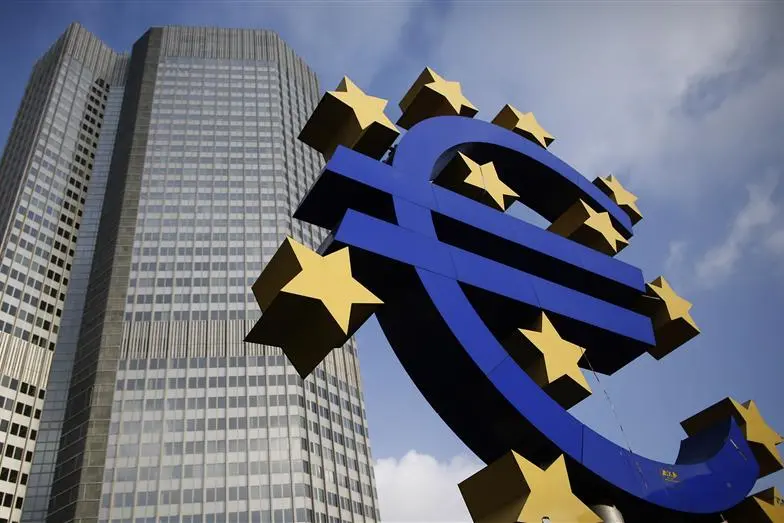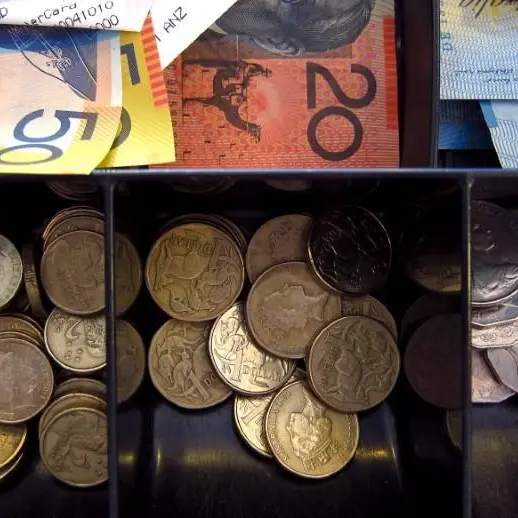PHOTO
* Backdrop looks ominously similar
* But painful memories could prove difference
* Some say Bunds more alluring now
By John Geddie
LONDON, April 27 (Reuters) - Memories of the rout in German bonds a year ago may help investors avoid similar losses if euro zone data on Friday again suggests the bloc has shaken off the threat of deflation.
The backdrop looks ominously similar to last year, when a small uptick in inflation in April triggered a sell-off that left some investors nursing losses of more than 10 percent on assets usually seen as among the world's safest.
Yields on the euro zone's top-rated bonds have approached but failed to break below zero, while economists are forecasting negative inflation even though oil prices have surged 15 percent this month, just as they did in April 2015.
"It was around this time last year when things started to get a little bit creaky and then all of a sudden all hell broke loose," said Ryan Myerberg, portfolio manager at Janus Capital.
"That reversal was very painful and I think because of that people are much more cautious about how much they are prepared to put into the trade."
Just before last year's sell-off, which started a panic that spread across borders and asset classes, one of Myerberg's colleagues, Bill Gross, called Bunds "the short of a lifetime".
German bond yields have climbed from lows of 0.075 percent earlier this month to 0.30 percent.
That is the exact level seen before data on April 30 last year confirmed that four months of deflation in the euro zone had ended, sending yields surging away from a record low of 0.05 percent to more than 1 percent in a matter of weeks.
The next reading of euro zone inflation, due on Friday, April 29, is expected to show prices fell 0.1 percent year-on-year.
But there are important differences this time.
In 2015, nearly everyone expected the vast quantities of cash being printed by the European Central Bank to push German bond yields ever closer to zero, and possibly even through it.
It become such a crowded trade that when it started to reverse, everyone headed for the exit at the same time and there were no buyers.
Now at least there are differences of opinion.
"Last year it was literally a one-way bet. Yields were going to zero, they were going negative. Nearly everyone was telling investors they had to be long Bunds," said Owen Callan, a senior analyst at Cantor Fitzgerald.
"There is less of an expectation now that we will keep going lower and yields will never have a bottom."
This is backed up by ECB data which shows foreign investors have been selling long-dated euro zone bonds on a scale not seen since the months following the sell-off last year.
Overseas holders sold a net 42 billion euros worth of these bonds in February, the fourth straight month of outflows and the biggest since July 2015.
DIFFERENT SITUATION
Another argument made by those that say the market is not setting itself up for another fall is that, in relative terms, German bonds do not seem as overvalued as they did a year ago.
Europe's banks -- some of the biggest investors in government bonds -- now face higher charges on their spare cash with the ECB having lowered its deposit rate to minus 0.4 percent from minus 0.2 percent last year.
As a result, even though Bund yields are similiar, they have greater appeal for investors.
Bunds are also now more appealing than other global benchmarks such as Japanese government bonds. Germany's 10-year yields are now 40 bps below Japanese equivalents , having been around 15 bps above this time last year.
"We think that the current situation is very different to the one in April 2015 when the Bund's valuation was at an extreme level," said Patrick Jacq, European rate strategist at BNP Paribas.
Others say that even if there are near-term blips in inflation that could push up yields, the longer-term outlook is far more muted so should keep any sell-off in check.
The recent rise in oil prices has failed to lift the five-year, five-year forward breakeven rate-- a measure of what 2026 inflation expectations will be in 2021 that is often cited by the ECB.
It has sagged to near record lows of 1.40 percent, well below the ECB's inflation target of just under 2 percent.
Iain Stealey, a portfolio manager at JPMorgan Global Bond Opportunities Fund says Japan -- which has seen 10-year yields largely bound between 0.5 and 2 percent over the last decade -- could be "a roadmap for the euro zone" which makes a "vicious snapback in yields less likely". (Editing by Catherine Evans) ((John.Geddie@thomsonreuters.com; +44 20 7542 3486; Reuters Messaging: john.geddie.thomsonreuters.com@reuters.net))
* But painful memories could prove difference
* Some say Bunds more alluring now
By John Geddie
LONDON, April 27 (Reuters) - Memories of the rout in German bonds a year ago may help investors avoid similar losses if euro zone data on Friday again suggests the bloc has shaken off the threat of deflation.
The backdrop looks ominously similar to last year, when a small uptick in inflation in April triggered a sell-off that left some investors nursing losses of more than 10 percent on assets usually seen as among the world's safest.
Yields on the euro zone's top-rated bonds have approached but failed to break below zero, while economists are forecasting negative inflation even though oil prices have surged 15 percent this month, just as they did in April 2015.
"It was around this time last year when things started to get a little bit creaky and then all of a sudden all hell broke loose," said Ryan Myerberg, portfolio manager at Janus Capital.
"That reversal was very painful and I think because of that people are much more cautious about how much they are prepared to put into the trade."
Just before last year's sell-off, which started a panic that spread across borders and asset classes, one of Myerberg's colleagues, Bill Gross, called Bunds "the short of a lifetime".
German bond yields have climbed from lows of 0.075 percent earlier this month to 0.30 percent.
That is the exact level seen before data on April 30 last year confirmed that four months of deflation in the euro zone had ended, sending yields surging away from a record low of 0.05 percent to more than 1 percent in a matter of weeks.
The next reading of euro zone inflation, due on Friday, April 29, is expected to show prices fell 0.1 percent year-on-year.
But there are important differences this time.
In 2015, nearly everyone expected the vast quantities of cash being printed by the European Central Bank to push German bond yields ever closer to zero, and possibly even through it.
It become such a crowded trade that when it started to reverse, everyone headed for the exit at the same time and there were no buyers.
Now at least there are differences of opinion.
"Last year it was literally a one-way bet. Yields were going to zero, they were going negative. Nearly everyone was telling investors they had to be long Bunds," said Owen Callan, a senior analyst at Cantor Fitzgerald.
"There is less of an expectation now that we will keep going lower and yields will never have a bottom."
This is backed up by ECB data which shows foreign investors have been selling long-dated euro zone bonds on a scale not seen since the months following the sell-off last year.
Overseas holders sold a net 42 billion euros worth of these bonds in February, the fourth straight month of outflows and the biggest since July 2015.
DIFFERENT SITUATION
Another argument made by those that say the market is not setting itself up for another fall is that, in relative terms, German bonds do not seem as overvalued as they did a year ago.
Europe's banks -- some of the biggest investors in government bonds -- now face higher charges on their spare cash with the ECB having lowered its deposit rate to minus 0.4 percent from minus 0.2 percent last year.
As a result, even though Bund yields are similiar, they have greater appeal for investors.
Bunds are also now more appealing than other global benchmarks such as Japanese government bonds. Germany's 10-year yields are now 40 bps below Japanese equivalents , having been around 15 bps above this time last year.
"We think that the current situation is very different to the one in April 2015 when the Bund's valuation was at an extreme level," said Patrick Jacq, European rate strategist at BNP Paribas.
Others say that even if there are near-term blips in inflation that could push up yields, the longer-term outlook is far more muted so should keep any sell-off in check.
The recent rise in oil prices has failed to lift the five-year, five-year forward breakeven rate-- a measure of what 2026 inflation expectations will be in 2021 that is often cited by the ECB.
It has sagged to near record lows of 1.40 percent, well below the ECB's inflation target of just under 2 percent.
Iain Stealey, a portfolio manager at JPMorgan Global Bond Opportunities Fund says Japan -- which has seen 10-year yields largely bound between 0.5 and 2 percent over the last decade -- could be "a roadmap for the euro zone" which makes a "vicious snapback in yields less likely". (Editing by Catherine Evans) ((John.Geddie@thomsonreuters.com; +44 20 7542 3486; Reuters Messaging: john.geddie.thomsonreuters.com@reuters.net))












